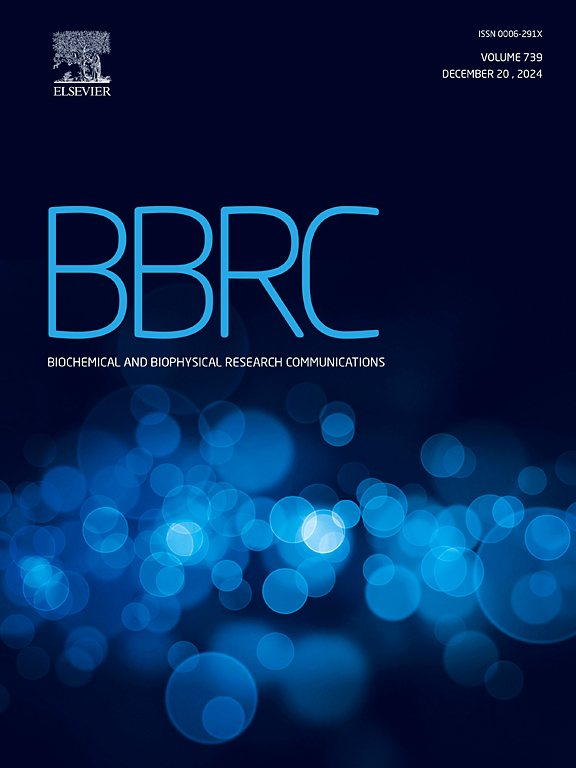SP1 regulates porcine primary adipocyte differentiation by modulating BAMBI transcriptional activity
IF 2.5
3区 生物学
Q3 BIOCHEMISTRY & MOLECULAR BIOLOGY
Biochemical and biophysical research communications
Pub Date : 2025-03-02
DOI:10.1016/j.bbrc.2025.151576
引用次数: 0
Abstract
Obesity is a critical metabolic disorder in modern society, necessitating urgent research and intervention. Compared to mice, pigs are increasingly been recognized as valuable model organisms for such studied due to their closer genetic similarity to humans. The BAMBI gene plays a pivotal role in adipocyte differentiation and adipose tissue development, rendering it a potent target for exploring the mechanisms of obesity and related metabolic disorders. This study conducted an in-depth exploration of the intricate regulatory mechanisms governing the BAMBI gene, with a particular emphasis on the transcription factor SP1. Our experiments strongly provided that SP1 modulates BAMBI transcription by directly binding to its promoter. Using primary porcine adipocytes, we further demonstrated that SP1 regulates adipocyte differentiation occurs via the BAMBI gene. These findings enhance understanding of the critical role played by the BAMBI gene in adipocyte differentiation and establish a theoretical foundation for novel therapeutic strategies targeting obesity and type 2 diabetes. Importantly, this study emphasizes the potential of SP-BAMBI pathways in interventions within the context of metabolic diseases, addressing the global challenges posed by obesity and its associated complications.
求助全文
约1分钟内获得全文
求助全文
来源期刊
CiteScore
6.10
自引率
0.00%
发文量
1400
审稿时长
14 days
期刊介绍:
Biochemical and Biophysical Research Communications is the premier international journal devoted to the very rapid dissemination of timely and significant experimental results in diverse fields of biological research. The development of the "Breakthroughs and Views" section brings the minireview format to the journal, and issues often contain collections of special interest manuscripts. BBRC is published weekly (52 issues/year).Research Areas now include: Biochemistry; biophysics; cell biology; developmental biology; immunology
; molecular biology; neurobiology; plant biology and proteomics

 求助内容:
求助内容: 应助结果提醒方式:
应助结果提醒方式:


